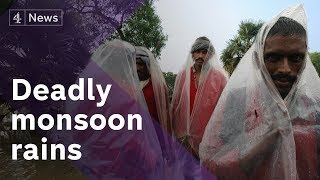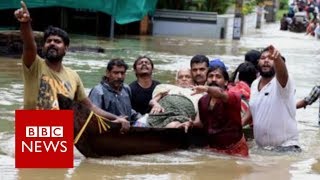Wednesday, 24 December, 2025г.
















Где искать: по сайтам Запорожской области, статьи, видео ролики
пример: покупка автомобиля в Запорожье
The Intertropical Convergence Zone (ITCZ), monsoon and dry seasons
Merchandise: https://shop.spreadshirt.nl/aardrijkskunde-bijles/
In other video’s I’ve demonstrated that on average the region around the equator receives the most energy of the sun. This causes the surface to warm, which leads to the air to expand, which makes it lighter and rises, causing a low-pressure area. Because the earth’s axis is tilted, the energy of the sun isn’t directed to the equator every month. At the 21th of December, the tropic of Capricorn, a latitude circle 23,5 degrees South of the equator, receives most energy. At the Northern Hemisphire, this is called the winter solstice. Half a year later, at the 21th of June, the sun gives te most energy to the tropic of Cancer, a latitude circle 23,5 degrees North of the Equator, causing the summer solstice in the Northern Hemisphere. Although there is a huge variety per season, on average per year, the equator recies most energy.
The energy which is received from the sun causes a low-pressure area. This low-pressure area, around the equator, is called the Intertropical Convergence Zone, or the ITCZ. Because the energy of the sun varies per season, so does the exact location of the ITCZ, causing a precipitation pattern between the tropic of Capricorn and the tropic of Cancer, where rain and dry seasons exist.
Let’s start investigating this pattern around the equator. The low-pressure area causes it to rain. Now it’s becoming June, when the Sun is high at the sky at the tropic of cancer. The ITCZ is moving along with the sun’s heat to the north, and there will be a rain season north of the equator. Keep in mind that the low-pressure area in the region south of the equator is absent, causing a dry season. After June, the ITCZ is moving south, along with the Sun. The rain season north of the equator ends, while the rain season in the area south of the equator begins. In December the sun gives the most energy to the tropic of Capricorn, which causes the ITCZ moving along south of the equator which will start the rain season. Because of the movement of the ITCZ, the rain and dry seasons exist!
The equator will almost always be influenced by the ITCZ, causing it to rain. So at the equator, there will be no dry season. According to the Climate System of Köppen, these are Af Climates: Warm and moist.
North of the equator it rains in july, and It’s dry in December, which makes it an Aw climate: Warm and dry in the winter months.
South of the equator it rains in December and it’s dry in June. Because it’s warm in December and January this is called summer in the southern hemisphere. De seasons are turned around with the northern hemisphere. So, June and July are the winter months in the southern hemisphere. The drought in June and July in the Southern hemisphere, is also a winter drought. So, also in these regions, there is an Aw-climate: Warm and dry in the wintermonts.
Remark that a so-calles Aso-climate, where the summer is dry, is very rare, because the area’s around the equator are warm in the summer, causing a low-pressure area, which causes it to rain.
Теги:
ITCZ Intertropical convergence zone Monsoon Rain season Dry season tropic of capricorn tropic of cancer low-pressure area As Climate Af climate Aw climate seasonal shifts doldrums monsoon trough trade winds drought flooding thunderstorms equator
Похожие видео
Мой аккаунт


 У вашего броузера проблема в совместимости с HTML5
У вашего броузера проблема в совместимости с HTML5


